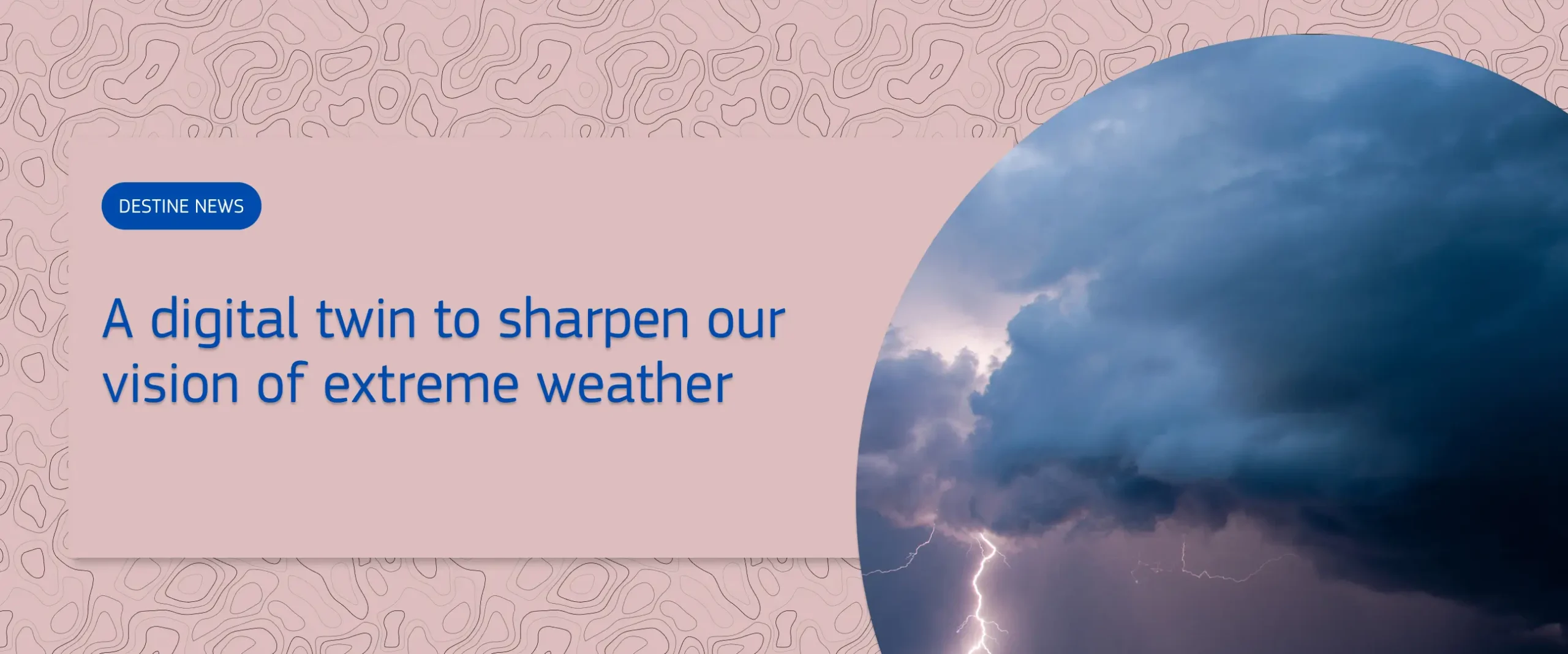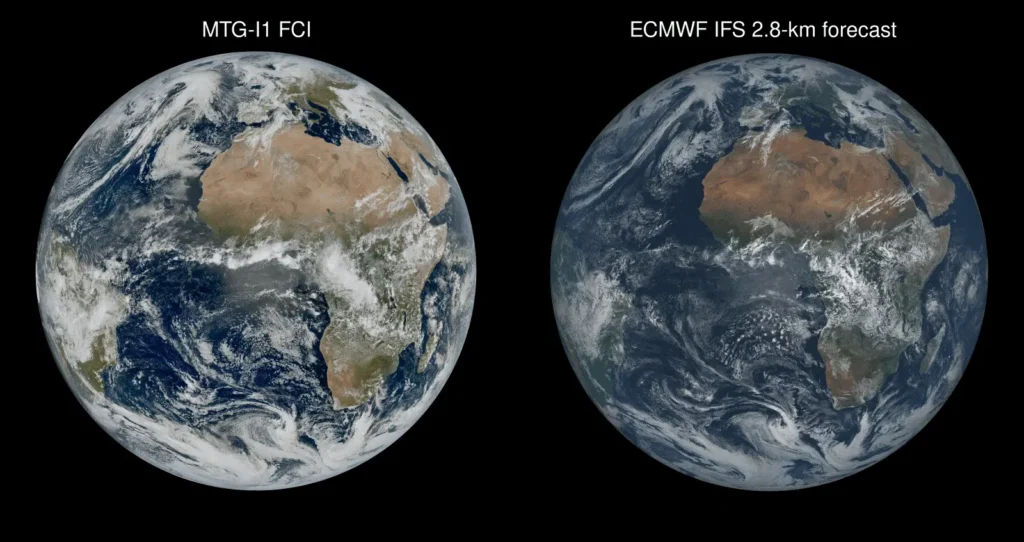A digital twin to sharpen our vision of extreme weather

NOTE: this is an excerpt of an explainer article that was originally published on the ECMWFEuropean Centre for Medium-Range Weather Forecasts More website.
The Weather-Induced Extremes Digital Twin (Extremes DT) creates a unique capability to produce bespoke cutting-edge numerical simulations of extreme events on a timescale of a few days ahead, to support decision-makers to rapidly respond to meteorological, hydrological and air quality extremes as they emerge. It relies on a global component developed by ECMWFEuropean Centre for Medium-Range Weather Forecasts More and on a regional component developed by a strong partnership led by Météo-France. The global component will be run on a regular basis, while the regional component will be activated to zoom in on extreme events occurring over Europe.
The ambitious Destination Earth (DestinE) initiative of the European Union aims at building a digital replica – or twin – of the Earth system in support of the EU Commission’s Green Deal environmental policies and of the Digital Strategy. DestinE will allow us to better respond and adapt to the environmental challenges posed by climate change and extreme events, by creating a new type of information system, characterized by enhanced quality and interactivity.
With weather-induced extreme events becoming more frequent and intense in a changing climate, it becomes urgent to boost our abilities to anticipate their impacts and support decision-makers to rapidly take action and prevent the worst consequences. This is why one of the first two high-priority digital twins developed in DestinE focuses on weather-induced extremes.
The Weather-Induced Extremes Digital Twin (Extremes DT) will support decision-makers to rapidly respond to extreme events as they emerge, through its unique bespoke simulation capability that allows to zoom in on meteorological, hydrological and air quality extremes as they emerge. It relies on cutting-edge very high-resolution numerical simulations on a timescale of a few days ahead, which makes it possible to provide detailed information at the scales where extreme events matter and are felt, with a focus on the sectors most impacted by climate change. The Extremes DT thus complements existing weather and impact sector prediction capabilities, at national and European levels.
The Extremes DT exploits decades of investment in earth-system prediction capabilities and observations, the latest breakthroughs in artificial intelligence and digital technologies and Europe’s leading supercomputers, those of the EuroHPC Joint Undertaking.

The Extremes DT is implemented by the European Centre for Medium-Range Weather Forecasts (ECMWFEuropean Centre for Medium-Range Weather Forecasts More) together with many partners throughout Europe. ECMWFEuropean Centre for Medium-Range Weather Forecasts More is also responsible for delivering the second high-priority digital twin in DestinE on Climate Change Adaptation (Climate DT), as well as the Digital Twin Engine (DTE). This complex software infrastructure will enable the running of not just the first two high priority twins but also integrate or support interoperability with other Digital Twins as they are developed. The DTE will also enable the handling of the vast amounts of data generated from the DestinE Digital Twins and tailor it to the user’s needs.